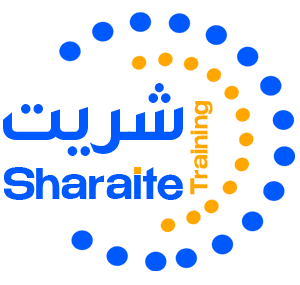This Microsoft Azure Administrator training course teaches IT Professionals how to manage their Azure subscriptions, secure identities, administer the infrastructure, configure virtual networking, connect Azure and on-premises sites, manage network traffic, implement storage solutions, create and scale virtual machines, implement web apps and containers, back up and share data, and monitor your solution.

Microsoft Azure Administrator Training Course in Kuwait
Course Overview:
This Microsoft Azure Administratior course teaches IT Professionals how to manage their Azure subscriptions, secure identities, administer the infrastructure, configure virtual networking, connect Azure and on-premises sites, manage network traffic, implement storage solutions, create and scale virtual machines, implement web apps and containers, back up and share data, and monitor your solution.
As an Azure administrator, you often serve as part of a larger team dedicated to implementing an organization’s cloud infrastructure. You also coordinate with other roles to deliver Azure networking, security, database, application development, and DevOps solutions.

You should be familiar with:
- Operating systems
- Networking
- Servers
- Virtualization
In addition, you should have experience with:
- PowerShell
- Azure CLI
- The Azure portal
- Azure Resource Manager templates
- Microsoft Entra ID
Skills Measured:
- Manage Azure identities and governance
- Implement and manage storage
- Deploy and manage Azure compute resources
- Implement and manage virtual networking
- Monitor and maintain Azure resources
Course Outlines:
- Module 1: IdentityIn this module, you will learn how to secure identities with Azure Active Directory, and implement users and groups.Lessons
- Azure Active Directory
- Users and Groups
After completing this module, students will be able to:
- Secure and manage identities with Azure Active Directory.
- Implement and manage users and groups.
- Lab : Manage Azure Active Directory Identities
Module 2: Governance and Compliance
In this module, you will learn about managing your subscriptions and accounts, implementing Azure policies, and using Role-Based Access Control.
Lessons
- Subscriptions and Accounts
- Azure Policy
- Role-based Access Control (RBAC)
After completing this module, students will be able to:
- Implement and manage Azure subscriptions and accounts.
- Implement Azure Policy, including custom policies.
- Use RBAC to assign permissions.
- Lab : Manage Subscriptions and RBAC
- Lab : Manage Governance via Azure Policy
Module 3: Azure Administration
In this module, you will learn about the tools an Azure Administrator uses to manage their infrastructure. This includes the Azure Portal, Cloud Shell, Azure PowerShell, CLI, and Resource Manager Templates. This module includes:
Lessons
- Azure Administrator Tools
- ARM Templates
After completing this module, students will be able to:
- Use the Azure Portal and Cloud Shell.
- Use Azure PowerShell and CLI.
- Use ARM Templates to deploy resources.
- Lab : Manage Azure resources by Using ARM Templates
- Lab : Manage Azure resources by Using Azure PowerShell (Optional)
- Lab : Manage Azure resources by Using Azure CLI (Optional)
- Lab : Manage Azure resources by Using the Azure Portal
Module 4: Virtual Networking
In this module, you will learn about basic virtual networking concepts like virtual networks and subnetting, IP addressing, network security groups, Azure Firewall, and Azure DNS.
Lessons
- Virtual Networks
- Network Security groups
- Azure Firewall
- Azure DNS
After completing this module, students will be able to:
- Implement virtual networks and subnets.
- Configure network security groups.
- Configure Azure Firewall.
- Configure private and public DNS zones.
- Lab : Implement Virtual Networking
Module 5: Intersite Connectivity
In this module, you will learn about intersite connectivity features including VNet Peering, Virtual Network Gateways, and Site-to-Site Connections.
Lessons
- VNet Peering
- VPN Gateway Connections
- ExpressRoute and Virtual WAN
After completing this module, students will be able to:
- Configure VNet Peering.
- Configure VPN gateways.
- Choose the appropriate intersite connectivity solution.
- Lab : Implement Intersite Connectivity
Module 6: Network Traffic Management
In this module, you will learn about network traffic strategies including network routing and service endpoints, Azure Load Balancer, and Azure Application Gateway.
Lessons
- Network Routing and Endpoints
- Azure Load Balancer
- Azure Application Gateway
- Network Watcher
After completing this module, students will be able to:
- Configure network routing including custom routes and service endpoints.
- Configure an Azure Load Balancer.
- Configure and Azure Application Gateway.
- Configure Network Watcher.
- Lab : Implement Traffic Management
Module 7: Azure Storage
In this module, you will learn about basic storage features including storage accounts, blob storage, Azure files and File Sync, storage security, and storage tools.
Lessons
- Storage Accounts
- Blob Storage
- Storage Security
- Azure Files and File Sync
- Managing Storage
After completing this module, students will be able to:
- Create Azure storage accounts.
- Configure blob containers.
- Secure Azure storage.
- Configure Azure files shares and file sync.
- Manage storage with tools such as Storage Explorer.
- Lab : Manage Azure storage
Module 8: Azure Virtual Machines
In this module, you will learn about Azure virtual machines including planning, creating, availability and extensions.
Lessons
- Creating Virtual Machines
- Virtual Machine Availability
- Virtual Machine Extensions
After completing this module, students will be able to:
- Plan for virtual machine implementations.
- Create virtual machines.
- Configure virtual machine availability, including scale sets.
- Use virtual machine extensions.
- Lab : Manage virtual machines
Module 9: PaaS Compute Options
In this module, you will learn how to administer serverless computing features like Azure App Service, Azure Container Instances, and Kubernetes.
Lessons
- Azure App Service Plans
- Azure App Service
- Container Services
- Azure Kubernetes Service
After completing this module, students will be able to:
- Create an app service plan.
- Create a web app.
- Implement Azure Container Instances.
- Implement Azure Kubernetes Service.
Module 10: Data Protection
In this module, you will learn about backing up files and folders, and virtual machine backups.
Lessons
- File and Folder Backups
- Virtual Machine Backups
After completing this module, students will be able to:
- Backup and restore file and folders.
- Backup and restore virtual machines.
- Lab : Implement Web Apps
- Lab : Implement Azure Kubernetes Service
- Lab : Implement Azure Container Instances
Module 11: Monitoring
In this module, you will learn about monitoring your Azure infrastructure including Azure Monitor, alerting, and log analytics.
Lessons
- Azure Monitor
- Azure Alerts
- Log Analytics
After completing this module, students will be able to:
- Use Azure Monitor.
- Create Azure alerts.
- Query using Log Analytics.
- Lab : Implement Data Protection
- Lab : Implement Monitoring
Course Closure
Frequently Asked Questions (FAQs)
How do I know if this program is right for me?
After reviewing the information on the program landing page, we recommend you submit the short form above to gain access to the program brochure, which includes more in-depth information. If you still have questions on whether this program is a good fit for you, please contact us or email us training@shaarait.com, and a dedicated program advisor will follow-up with you very shortly.
Is it a certified training course?
After completing the training course, the participant will receive a certificate of attendance from Sharaite Training Institute, which is an institute accredited by the Public Authority for Applied Education and Training as well as the Civil Service Commission in Kuwait.
Is there a prerequisite to attend the training course?
No, there is no a prerequisite for attending the training course. However, to be certified you should attend the 85% of training.
What type of certificate will I receive?
Upon successful completion of the training course, you will receive a hardcopy certificate. The certificate can be shared with employers and on social media. You can use it on your cover letter, resume, and/or display it on your LinkedIn profile. The certificate will be delivered at the last day of the training.








